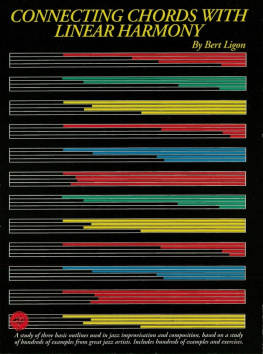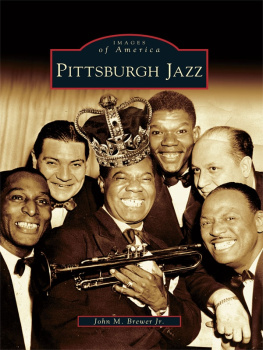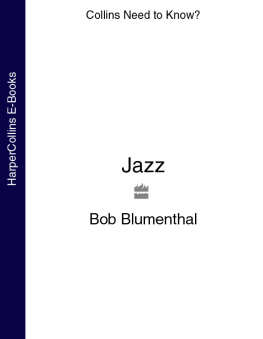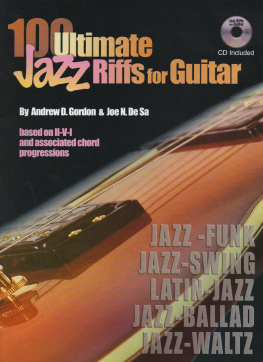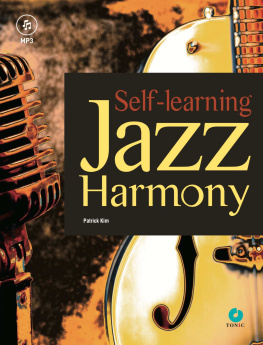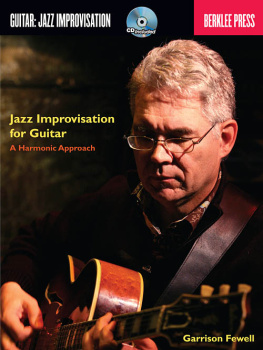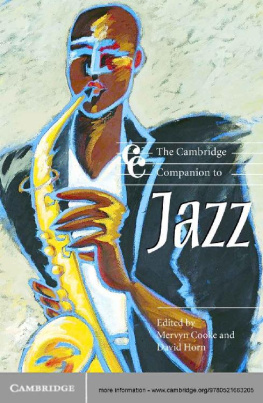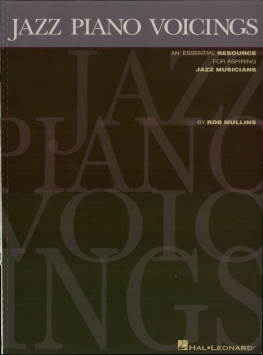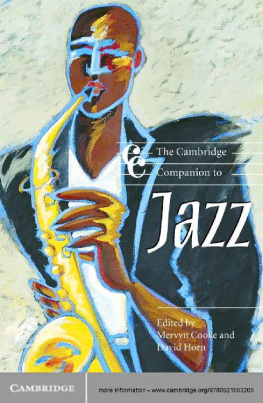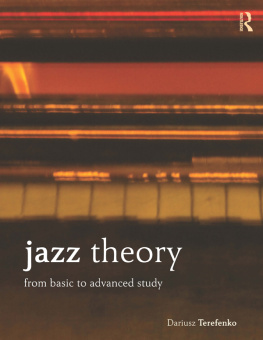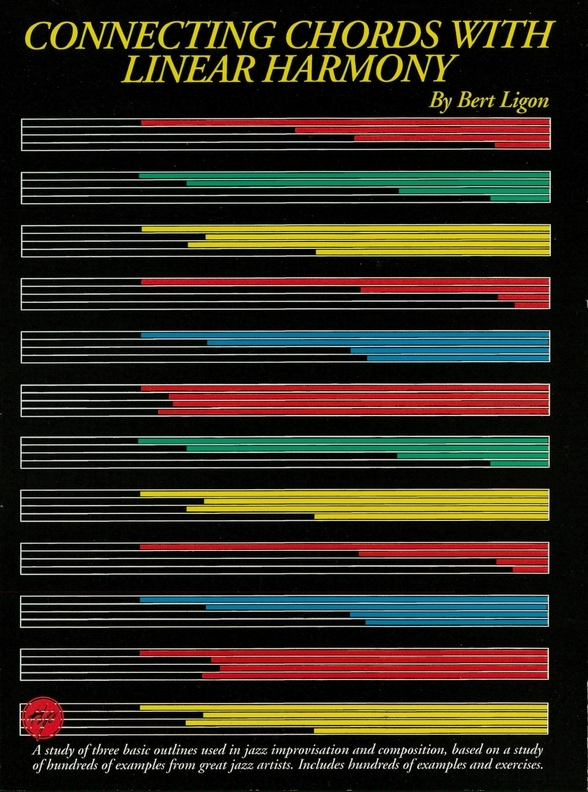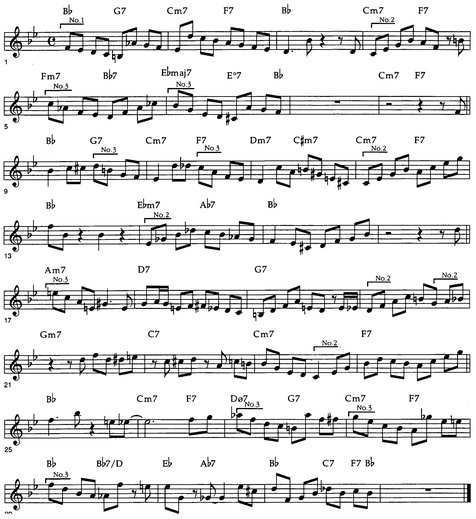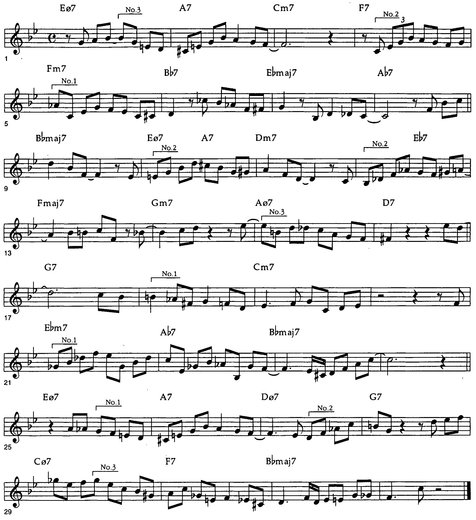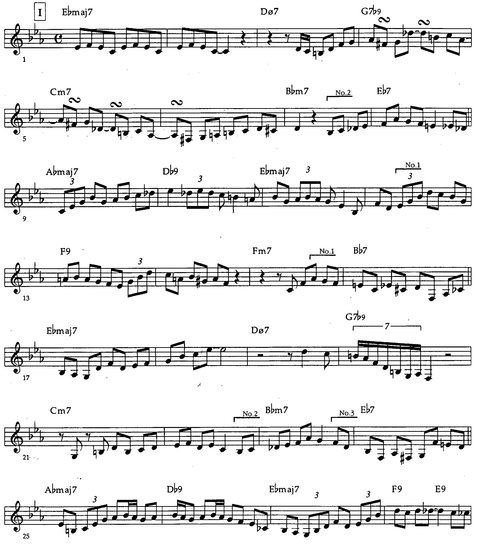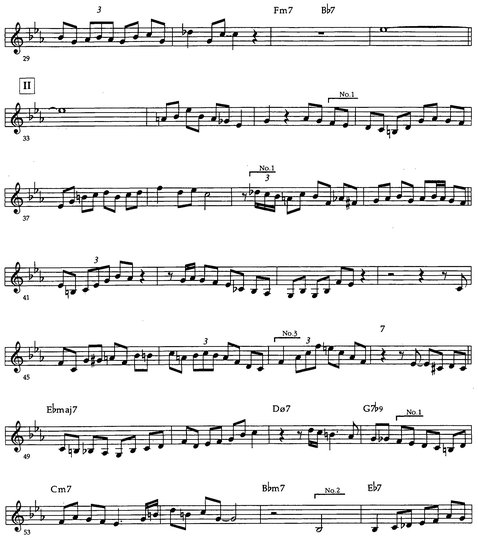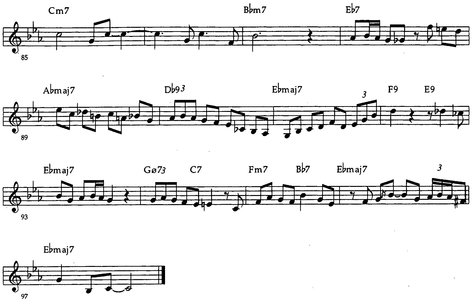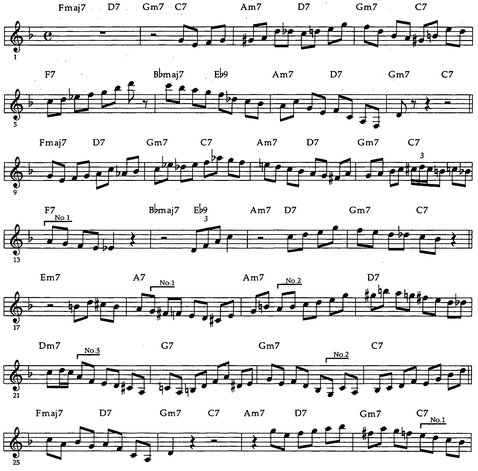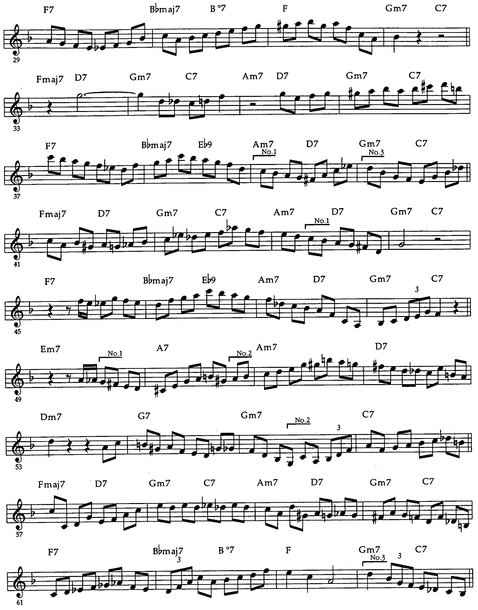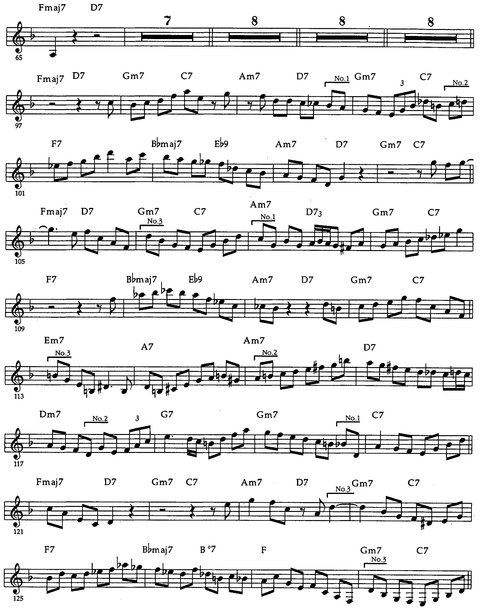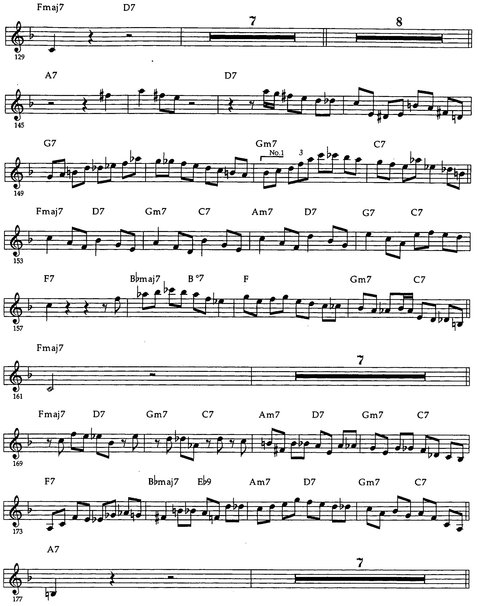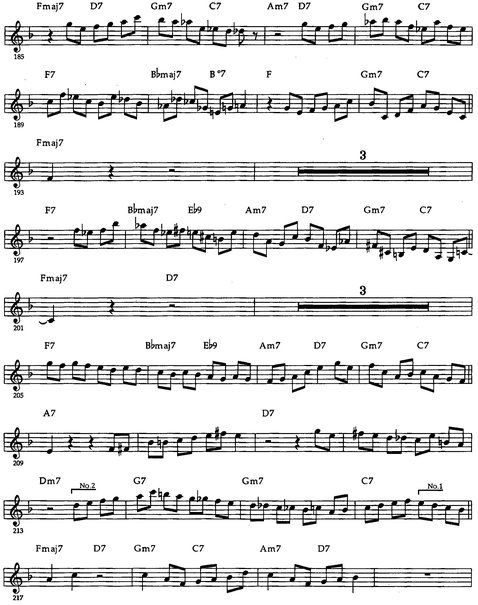Thanks to the hundreds of jazz artists who keep the music alive and inspire us all to practice. Thanks to my students without whom I might not have made these observations. Thanks to Dan Haerle who showed me that teaching jazz music could be creative and inspired. Thanks to my wife Brenda, sons Marc and David who help me keep perspective and put the life, love and laughter in the music.
Appendix I: Three Etudes on Standard Progressions
These three etudes are examples of invented solos based on standard progressions from Chapter 10. Invent your own solos using the outlines and other materials. Be creative. Use all three outlines and make them sound musical.
Etude 1. Standard Progression II: Rhythm Changes
Etude 2. Standard Progression III: Are You All the Outlines?
Etude 3. Standard Progression IV: Outlines by Starlight
Appendix II: Lou Donaldson solo on a standard jazz progression
Lou Donaldson relies heavily on the three outlines in this solo from the Art Blakey recording Live at Birdland. Clifford Brown plays a solo after Donaldson and constructs it almost exclusively from outline no.1.
Appendix III: Tom Harrell solo on a standard progression
Harrell uses many other devices to make this contemporary solo interesting, but relies many times on the three outlines. Study the solo, find the three outlines and examine their relationship in the larger context.
Appendix IV: Suggestions for Using Outlines in Jazz Improvisation Classes
WRITTEN COMPONENT
- Have students write out outlines for each new tune assigned in class to learn. Write out as shown for the previous standard jazz progressions.
Helps the students recognize the patterns in written form. Helps them prepare for improvising by learning the harmonic progression and identifying the tones necessary for modulation.
- Have students write out their own variations on each of the outlines.
One or two new lines for each outline over a semester would give students quite an arsenal of musical ideas. Practicing them develops technique and dexterity.
- Have students write out and learn solos using the outlines, ideas from the book, and the Etudes as models.
Helps the students integrate and use their knowledge creatively.
17. IDENTIFYING OUTLINES
Learn to identify outlines and recognize the devices used to embellish them. Here are five examples from Cannonball Adderley. Identify which outline is shown, and what devices are used to make them interesting.
- 17.1 Cannonball Adderley:
Outline No.2: Inverted direction with pick-up notes.
- 17.2 Cannonball Adderley:
Outline No.3: 3-5-7-9 arpeggio with octave displacement on the C7.
- 17.3 Cannonball Adderley:
Outline No.1: Stop and go rhythms delay the resolution of E7 until beat three; arpeggio on E7 (3-5-7-9) delays resolution of Am.
- 17.4 Cannonball Adderley:
Outline No.2: Leap back to a chord tone creates sawtooth shape, delays resolution of C7; chromatic leading tone (D#) precedes target note (E); leap from third to root of C7.

